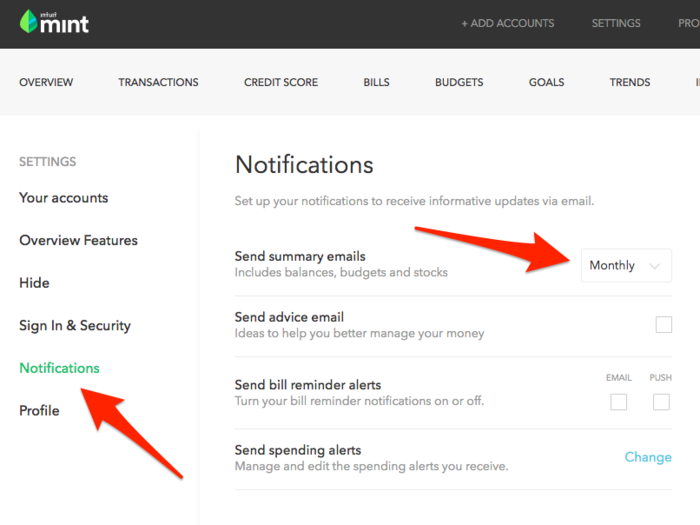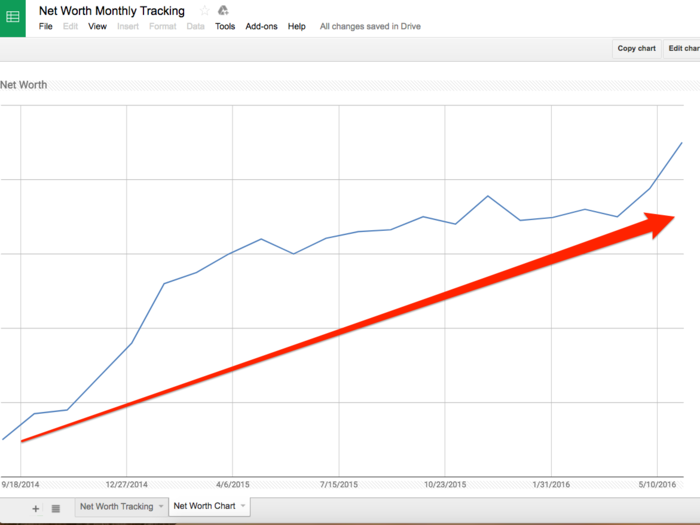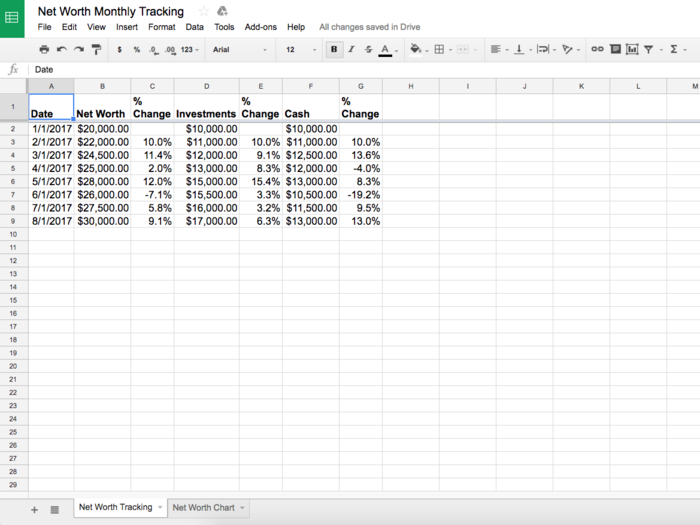You can partially automate the process by requesting monthly summary emails from your account aggregator of choice.
You don't have to use Mint, but it's the account aggregator I prefer. If you don't already have a Mint account, you'll have to create one in order to receive monthly summary emails.
Once you link your checking, savings, retirement, and investment accounts, Mint will keep track of the balances, as well as your transactions.
To sign up for emails, go to "settings" and select "notifications." The first option you'll see is for summary emails, which can be sent weekly, monthly, or never. I recommend receiving it monthly — weekly is too often, and never is ... well, not very helpful.
Every month, Mint will send you an email detailing all of your account balances. At the top of the email, you'll see your overall net worth (taking into account any debt you owe) with the label "Your Money."
It also shows the balances for all of your cash accounts and your investment accounts, organized into separate sections. It doesn't provide a total for each category, so you will have to add those up before logging the amount on your spreadsheet.
One of the most helpful parts about using a spreadsheet to track your net worth is creating a chart to visualize the growth over time.
The longer you keep track of your net worth, the more you'll be able to visualize your progress over time. I created a chart tracking net worth by date on a separate tab in my spreadsheet. This is a far easier way to see how your money is growing over time.
It's important to note your net worth will not go up in a straight, pretty line. It will be jagged, and some months your net worth may decrease a bit — if you made a big purchase or if the stock market goes down.
Over time, however, your net worth will go up. Keeping track of it could serve as positive reinforcement, or at least a helpful reminder that spending less than you earn is worth it.
I log my current net worth on the first day of every month. For example:
The spreadsheet I use has four main columns:
• Date
• Net worth (the combined total of investments and cash balances, minus any debt)
• Investments total (any money that is invested, whether in a 401(k), IRA, or other retirement account, as well as taxable investment accounts)
• Cash total (all checking and savings accounts)
I also calculate the percent change since the last month for each of the three categories. The formula I use is:
• Percent change = (This month - Last month)/This month
• For example: =(B3-B2)/B2
This allows me to see trends, and serves as a way to see how much I'm saving and what returns I am earning from month-to-month.
To get the numbers, I use Mint's monthly summary email, which usually arrives on the first day of the month.



